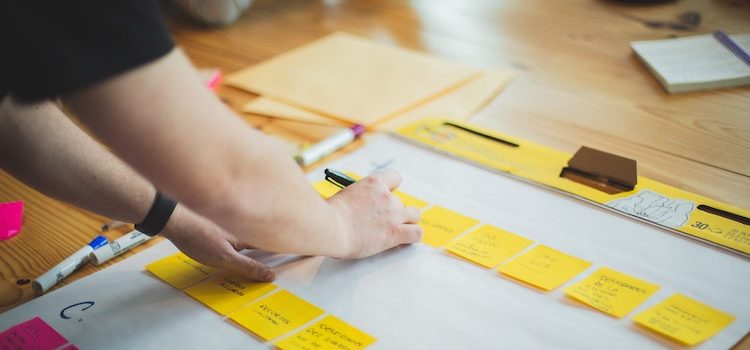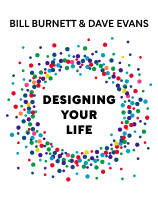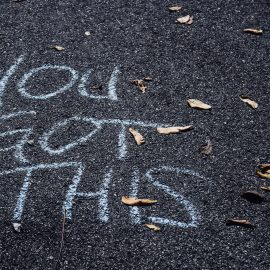

This article is an excerpt from the Shortform book guide to "Designing Your Life" by Bill Burnett and Dave Evans. Shortform has the world's best summaries and analyses of books you should be reading.
Like this article? Sign up for a free trial here .
How can you apply prototyping to your life plan? How can this technique help you design your future?
To figure out which way to go in life, you can build prototypes to explore your options. Two ways to use prototyping to design your future are to conduct life interviews and to pursue exploratory experiences.
Read on to learn how to design your future by prototyping your life.
Design Your Future
To design your future, you can use prototyping to explore questions about your alternatives by conducting life interviews and pursuing exploratory experiences.
Defective belief: The best way to answer questions about my plan is to conduct exhaustive research on every aspect of it.
- Corrected belief: I need to build prototypes to explore my questions and understand my alternatives.
One aspect of design thinking is experimentation. Experimentation simply means trying things out. The essence of design thinking in action is to build a potential solution to your problem so that you can test it. All problem solving begins with gathering data so that you can understand the problem correctly.
But designing your future is somewhat different because you don’t have reliable data about the future. That’s where prototyping comes in.
Prototyping for Life Design
Many people have an idea for their lives and leap ahead with it before finding out what it really means. For example, a man may love little Italian cafes, so he invests the time and money to open his own, but only then does he discover that he doesn’t like the actual work involved in running a cafe. Prototyping his cafe plan would have shown him this ahead of time.
Designing your future by prototyping enables you to do the following things:
- Ask the right questions to get good data.
- Gain experience through visualizing and experimenting with alternatives.
- Test your assumptions.
- “Fail fast” to rapidly learn what doesn’t work before you overinvest in a path without any real future.
- “Fail forward” by using your failures to make progress.
- Build empathetic relationships with others who are interested in your journey.
Two ways to use prototyping to design your future are to conduct life interviews and to pursue exploratory experiences.
Life Interviews
The easiest form of prototyping is a conversation, and for designing your future, the type of conversation you need is a life interview. In this kind of interview, you learn from someone who knows what it’s like to live the life you’re contemplating, and you let this tell you whether that life is something you’d really like to pursue for yourself. For example, the man who found that he didn’t really like running a cafe could have saved himself the grief and expense by talking with some cafe owners first and learning about what such a job and lifestyle really involves.
Life interviews are amazingly simple to conduct. You just find someone who’s currently doing the work and/or living the life you’re considering, and you get them to tell you their story by asking them: A) how they came to be doing this, and B) what it’s really like. Or you find someone who has expertise and experience, and you ask them how they got that expertise and what it was like to live that life.
Sometimes one of these interviews can lead to a job for you. People often respond empathetically when someone shows a genuine interest in them. But be sure not to approach a life interview as a job interview, because this will ruin the dynamic you’re seeking to establish by putting the other person in a judgmental frame of mind toward you.
Exploratory Experiences
The second kind of life design prototype is the exploratory experience, such as an internship, job shadowing, or volunteer work. Whatever form it takes, think of it as a “test drive” to give you hands-on experience and first-hand knowledge of the work and life you’re considering.
Coming Up with Ideas for Exploratory Experiences
Conducting several life interviews first can provide some good ideas for possible exploratory experiences. But if you feel stuck for ideas, consider using the following two approaches.
1. Use Odyssey Plans
You can use Odyssey Plans to intelligently plot your exploratory experiences. Pick one of your plans where the dashboard readings for “like level,” confidence, and coherence are relatively high, and use the questions you wrote for that plan as a guide to what you’re trying to understand better through your exploratory experiences.
2. Conduct Life Design Brainstorming
Everybody is familiar with brainstorming, but the process of brainstorming to design your future takes its own specific four-step form. It’s intended for use by groups of three to six people.
- Step 1: Frame a good open-ended question. Ensure the broadest possible field answers by phrasing your question as follows: “How many ways can we think of to…?” But be sure to make the question specific enough to be meaningful. Also, be careful not to accidentally include the solution in the question itself.
- Step 2: Warm up. Create some kind of transition, icebreaker exercise, or physical game to help everybody in the group relax, focus on the exercise, and use their creative brain while putting their analytical/critical brain on hold.
- Step 3: Conduct the brainstorm. Everybody should have their own pen and paper (plus sticky notes or other such recording tools), and everybody should follow these rules:
- Seek quantity over quality.
- Don’t judge or censor ideas.
- Build off other people’s ideas.
- Encourage wild, extravagant ideas. This creates a safe environment for ideas to emerge that otherwise might not have occurred, either because nobody thought of them or because nobody felt free to share them.
- Step 4: Process and codify the results. This is perhaps the most important step, but many people leave it out. Take the raw results of the brainstorming session and process them right away. Count how many ideas you had, and then vote (anonymously) to categorize them into such areas as most exciting, most likely to produce an awesome life, what we’d do if money didn’t matter, and so on. You can follow this with more discussion and reframing if you want. In any case, the end goal is to select which ideas you want to prototype in which prioritized order.
Mind Mapping
Mind mapping is an excellent one-person alternative to brainstorming that you can use to develop ideas for prototypes. You can also use mind mapping to come up with ideas for life interviews that you’d like to conduct.

———End of Preview———
Like what you just read? Read the rest of the world's best book summary and analysis of Bill Burnett and Dave Evans's "Designing Your Life" at Shortform .
Here's what you'll find in our full Designing Your Life summary :
- Why finding your "true passion" in life is a myth
- The five mental attitudes in design thinking
- How to design a meaningful life in which you can truly thrive






